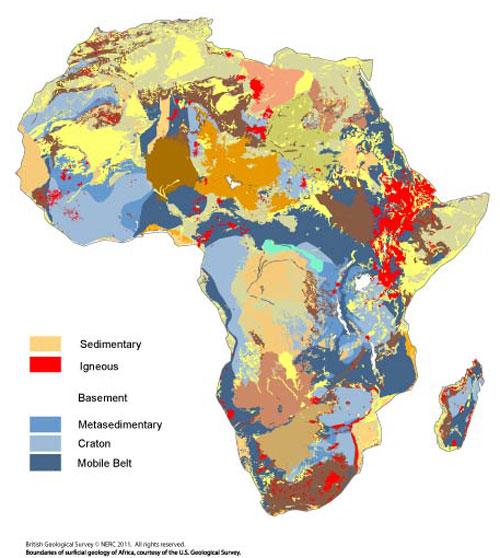Going deeper - groundwater, a hidden asset?
Falkenmark (1989) proposed one of the first quantitative metrics and currently the most accepted measurements of water scarcity - the Water Stress Index (WSI) which quantifies water scarcity based on the “hydraulic density of population”. However, the freshwater resources were computed based on simulations of mean annual river runoff (MARR) not only masks the inter-annual variability in discharge which is substantial in semi-arid regions in Africa (McMahon et al, 2007), but also neglects the importance of groundwater storage (Damkjaer and Taylor, 2017).
The exclusion of groundwater is particularly problematic and the potential of groundwater cannot be underestimated. Building on the last blog which found that climate change will reduce renewable surface water in some parts of Africa with increasing variability in rainfall, the population in sub-Saharan is expected to double, groundwater could be a strategic resource for coping with growth in water and food demands.
 |
Distribution and storage of groundwater
Groundwater accounts for 33% of global water withdrawal, yet it is often overlooked. McDonald et al.(2009) estimated that total storage to be as much as 0.66 million m3, more than 100x of annual renewal freshwater resources in Africa. Availability of groundwater depends primarily on geology; the graph demonstrates the uneven distribution of groundwater, particularly teeming in sedimentary basins of northern African countries like Libya, Egypt, Sudan that sit on the sedimentary aquifer (Gaye and Tindimugaya, 2019).
These large reserves provide a large buffer to climate changes, and there is potential to support increased water and food security under increased climate variability (McDonald et al.,2012).

Figure 2. The geological base map for Africa used to develop the aquifer map Source: BGS
How is groundwater affected by climate change?
IPCC assessments have indicated climate change will impact the recharge process, and it is projected to reduce renewable groundwater resources (high certainty). However, regional-scale assessments have the limitation of neglecting how aquifer replenishment works at a scaler scale. Empirical evidence from Taylor et al., (2012) in aquifer Makutapora Wellfield, central Tanzania found that intense, episodic precipitation associated with El Niño favours high magnitudes of groundwater replenishment. The findings were consistent in Sub-Africa (Cuthbert et al., 2019) where intense rainfall and flooding events enhance extreme annual recharge in dry subtropical locations, showing a linear precipitation-recharge relationship in drylands. Although the impact of climate change on groundwater resources is still under-researched, the potential resilience of groundwater to climate variability is much higher than previously expected, highlighting its importance in informing predictions and adaptation strategies.
What are the other potentials?
Quality - Groundwater is less vulnerable to surface contamination or pollution compared to surface water. The minerals and physical properties of rocks have a remarkable facility to disinfect and purify water through filtration, therefore less treatment is required before use (Gaye and Tindimugaya, 2019).
Irrigation and combat food insecurity - There are concerns of increasing climate change and population growth threats to water and food. Currently, groundwater irrigation contributes to only about 1% of the arable land (Altchenko and Villholth, 2014), increasing the level of smallholder/less intensive groundwater irrigation in semi-arid Sahel and East Africa regions would increase food production and security in the context of less reliable rainfall.
Access - groundwater can be easily accessed by various means such as boreholes and wells, especially when aquifers are shallow. So it becomes particularly valuable in rural/small towns with a lack of access to piped water supplies (Tindimugaya,2000). As an example, drinking supplies sourced from groundwater serve 92% of rural towns in Niger, showing the potential of domestic uses of groundwater(Pavelic et al., 2002).
Challenges - what to consider?
While groundwater is seemingly an especially viable option for Africa, concerns remain over the sustainability and magnitude of abstraction urban supplies and irrigation uses. Groundwater quality is threatened by sources of pollution from faecal contamination from pit latrines due to inadequate community hygiene (Howard et al., 2003 ). What constrains groundwater development and management is limited technical and institutional capacities. There is also the problem of inadequate information and knowledge on groundwater resources within African settings, central to this is introducing better monitoring networks and filling research gaps to have a better understanding of resources (Gaye and Tindimugaya, 2019).
Groundwater certainly has potential, but some limitations must be addressed to recognise and utilise the full potential of groundwater in a context with increasing uncertainties and variability.
Comments
Post a Comment